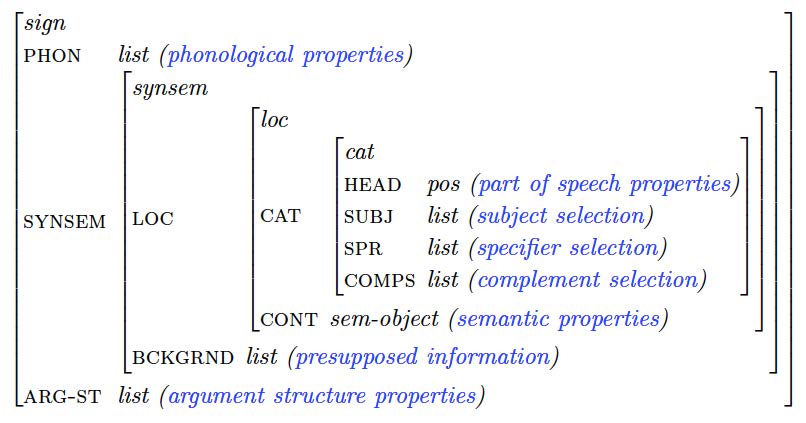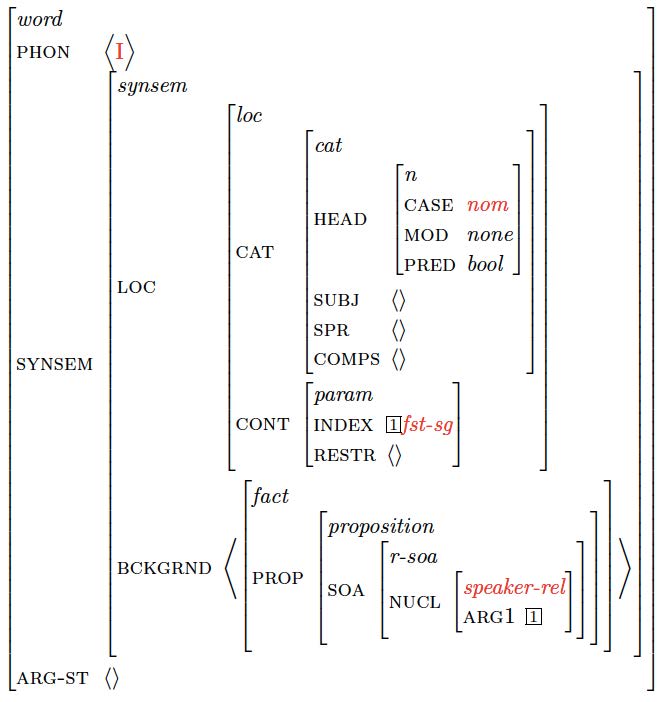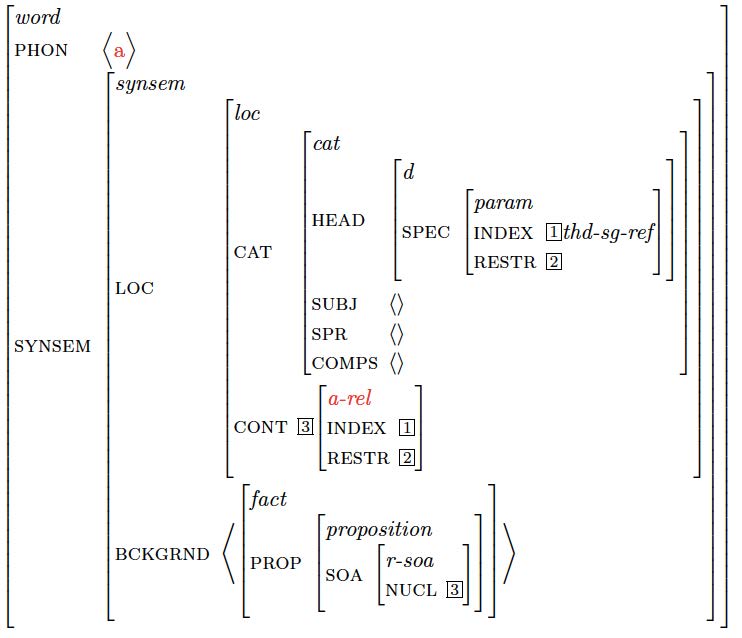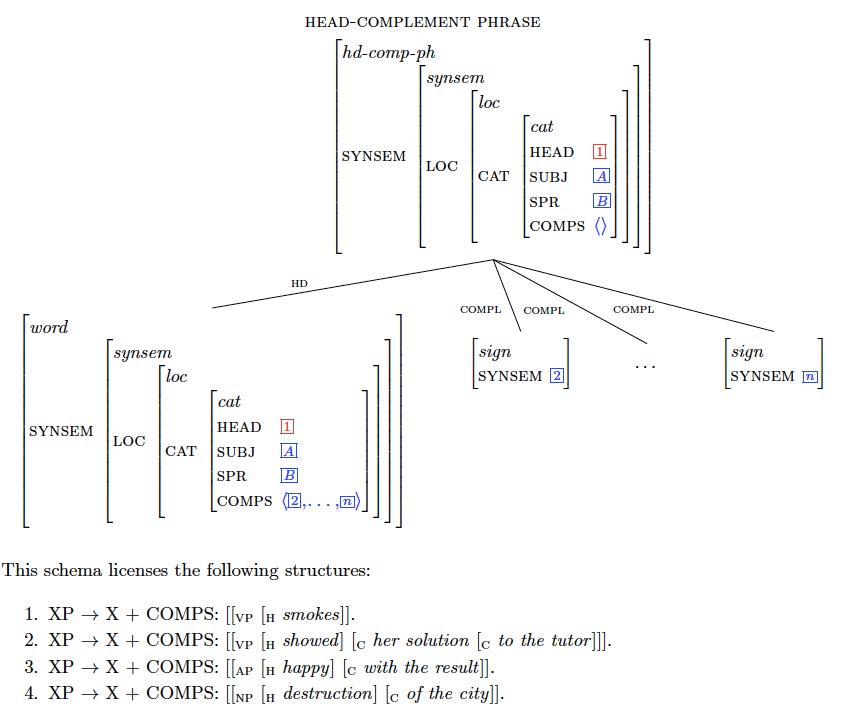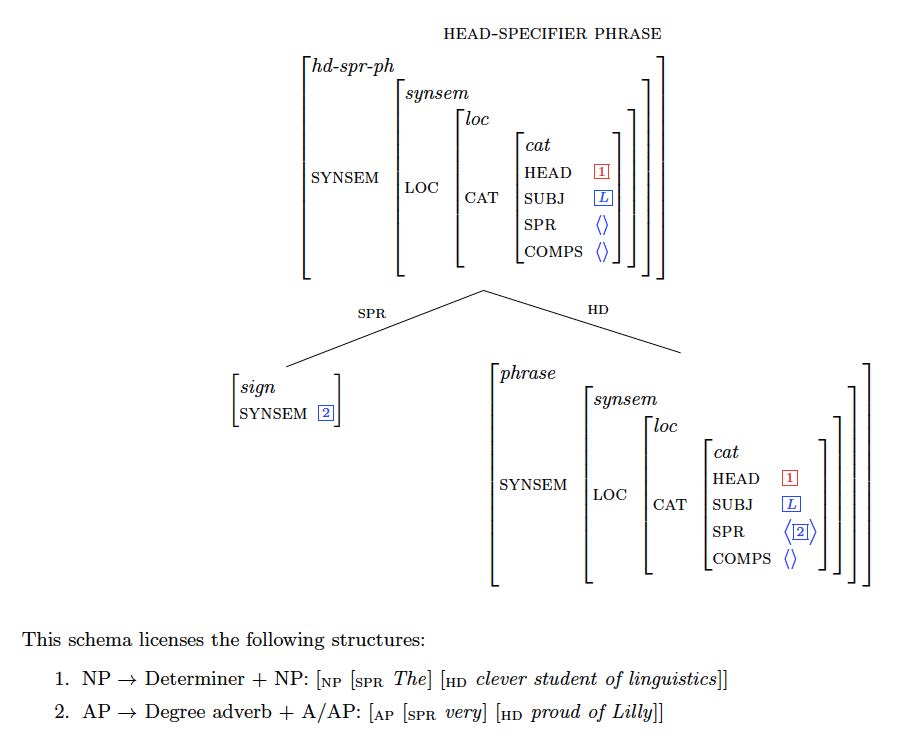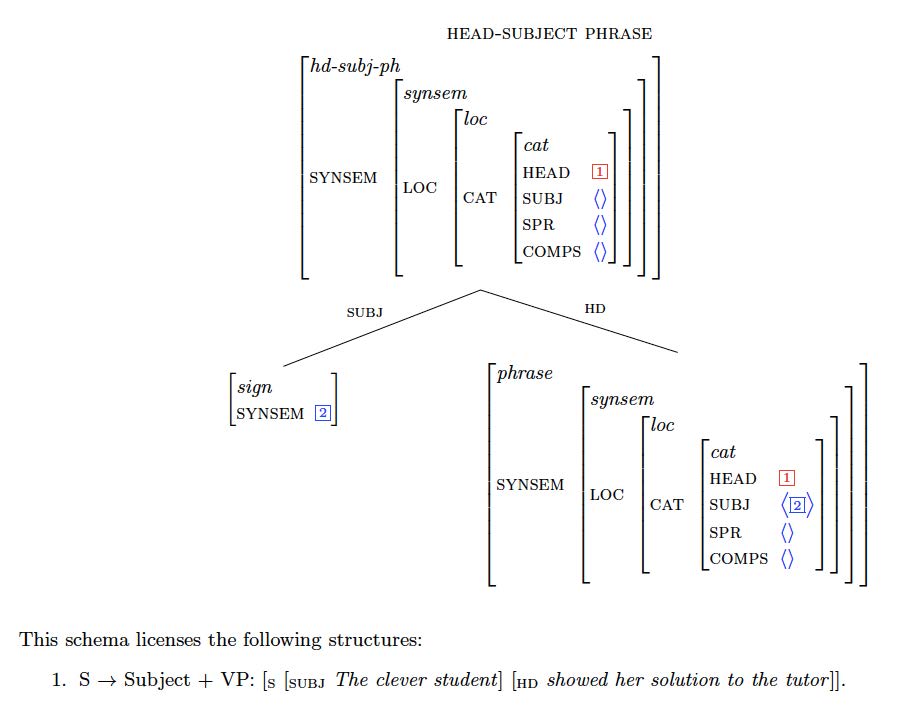CBA-2
Constraint-based Syntax 2
Welcome and Prospect
This course continues the course Constraint-based Analysis taught by Prof. Webelhuth in the previous semester. Constraint-based Analysis introduced the major theoretical techniques of the theory of Head-Driven Phrase Structure Grammar: types and type hierarchies, feature structures, constraints, and the six syntactic schemata proposed in Pollard and Sag (1994).
Constraint-based Syntax 2 focuses less on techniques and more on the structure of English. It illustrates that the techniques acquired by the students in the previous course are sufficient to develop concrete and insightful analyses of many English constructions, including the following: interrogative and relative clauses, passive sentences, and several varieties of infinitives.
Readings
We will read several chapters from the following book:
Ginzburg, Jonathan and Ivan Sag (2000). Interrogative Investigations: The Form, Meaning and Use of English Interrogatives. Stanford: CSLI.
Online Grammars
In order to prove the consistency and precision of the theory, we will again work with online grammars. These are available permanently. Here are the links to the grammars:
Online Grammar for Chapter 2: HPSG Background
OLAT
The OLAT course for CBA-2 is at Constraint-based Syntax 2 on OLAT.
Course and Module Requirements
Constraint-based Syntax 2 is Seminar A in the Core module Constraint-based Grammar (LING-CORE-CON). Seminar B is Constraint-based Semantics. The Modulhandbuch specifies the following requirements for the module:
1. Module Assessment
Seminar paper of about 15-20 standard pages (6,000-8,000 words, max. 4 weeks to complete / full time) or a 30-minute oral examination relating to seminar A or B. At the beginning of the seminar, the lecturer in charge will determine the possible forms of examinations.
2. Performance record
Oral presentation or written work (5 pages) for the seminar which is not the subject of the module examination.
Week 1
New Feature Geometry
The geometry of the feature structures of Ginzburg and Sag (from here on simply GS) differs slightly from that of Pollard and Sag (1994). Here is the general structure of a sign:
We find the following differences from the earlier feature geometry:
- Instead of a SUBCAT list, there is now an ARG-ST. Only signs of type word have this list-valued attribute. Like SUBCAT, it contains all the syntactic arguments of a word. Unlike SUBCAT, this list is not used for head-driven phrase formation, however! It is used, among others, for the Binding Theory.
- As part of the category information of the sign, we now find the 3 valence attributes SUBJ, SPR, and COMPS. Together with combinatorial schemas, they drive phrase formation from the information in the head daughter. They have the following properties:
- SUBJ: the list contains 0-1 synsem objects
- SPR: the list contains 0-1 synsem object
- Comps: the list contains 0-3 synsem objects
Some Words in the New Feature Geometry
The word I:
The word a:
Phrases
Unlike Pollard and Sag (1994), GS give subtypes to the type phrase which reflect the functional relationship between the head daughter and the non-head daughter(s). The following phrase types exist:
Head-Complement Phrases
A Head-Complement Phrase is formed from a word and one phrase for each of the synsems on the head's COMPS list. There has to be a 1:1 relation between the selected synsems and the phrases:
Head-Specifier Phrases
In a Head-Specifier Phrase a head combines with a phrase whose synsem is token-identical to the synsem on the head's SPR list:
Head-Subject Phrases
In a Head-Subject Phrase a head combines with a phrase whose synsem is token-identical to the synsem on the head's SUBJ list:
Note that unlike in Pollard and Sag (1994), subjects of verbs combine with the head in a Head-Subject Phrase, whereas determiners combine with the nominal they specify in a Head-Specifier Phrase!
Homework for next time
- Read p. 17-38 in GS (ignore the section on lexemes at the beginning!
- Study the type definitions in these pages and make sure you understand them!
Week 2
